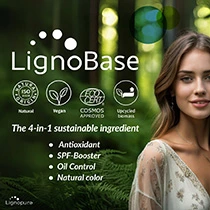Estée Lauder pulls annual profit forecasts as China struggles hit earnings
Spending trends in China continue to slump for the beauty industry, prompting Estée Lauder to withdraw annual sales and profit forecasts for the upcoming year. The luxury cosmetic company also announced a reduced quarterly dividend payout to US$0.35 per share from US$0.66.
In a quarterly earnings call on October 31, CEO Fabrizio Freda reported a challenging start to fiscal year 2025, partly due to ongoing economic recovery challenges in China and a lack of demand in Asia travel retail.
“Looking ahead, as the quarter evolved and through October, it became increasingly apparent that we are facing greater macro headwinds for fiscal year 2025 than we expected in August,” said Freda on the earnings call.
Last month, the Chinese government announced a stimulus package plan to help boost the economy past the post-pandemic downturn. Still, this fiscal stimulus is not expected to impact company performance by the second quarter, says Freda.
“While we believe the new economic stimulus measures in China present medium- to long-term potential for stabilization and ultimately growth in prestige beauty, we anticipate still-strong declines near-term for the industry in China and Asia travel retail.”
News of this forecast withdrawal followed shortly after the company named Stéphane de La Faverie as the incoming Estée Lauder CEO and successor to Freda, as reported by Personal Care Insights last week. De La Faverie is set to take over the CEO position next year where he will be expected to lead the company in new strategies to meet changing customer preferences in regions like China and restore investor confidence.
Pressure across the luxury beauty sector
Estée Lauder’s quarterly performance underscores a broader trend that is also affecting peer multinational beauty brands like L’Oréal and Shiseido. L’Oréal, which owns the Maybelline and Lancome brands, reported third-quarter sales below market expectations. Procter & Gamble’s Japanese luxury skin care brand, SK-II, also announced a Q1 2025 year-over-year revenue decline due in part to poor performance in the Chinese market.
The overall downward trend is partly attributed to more cautious Chinese consumers who are changing their purchasing behavior toward essential goods and tightening discretionary spending, according to Ning Leng, a professor at Georgetown University, during a US State Department briefing on China’s domestic economy in September. Trends in Chinese markets are still impacting luxury beauty industry.
Trends in Chinese markets are still impacting luxury beauty industry.
Another challenge has been the slowdown in travel retail, which is usually a critical revenue stream for beauty brands in Asia. Fewer Chinese consumers are traveling now than they were pre-pandemic and are therefore not shopping at duty-free outlets that have previously had high sales.
Still, beauty brands, including Estée Lauder and L’Oréal, are showing solid performances in other areas. In the same earnings report, Estée Lauder pointed to growth in the EMEA markets and luxury fragrance.
Personal Care Insights has reported on the current cosmetics climate, highlighting areas of resilience and also downturn across the globe.














